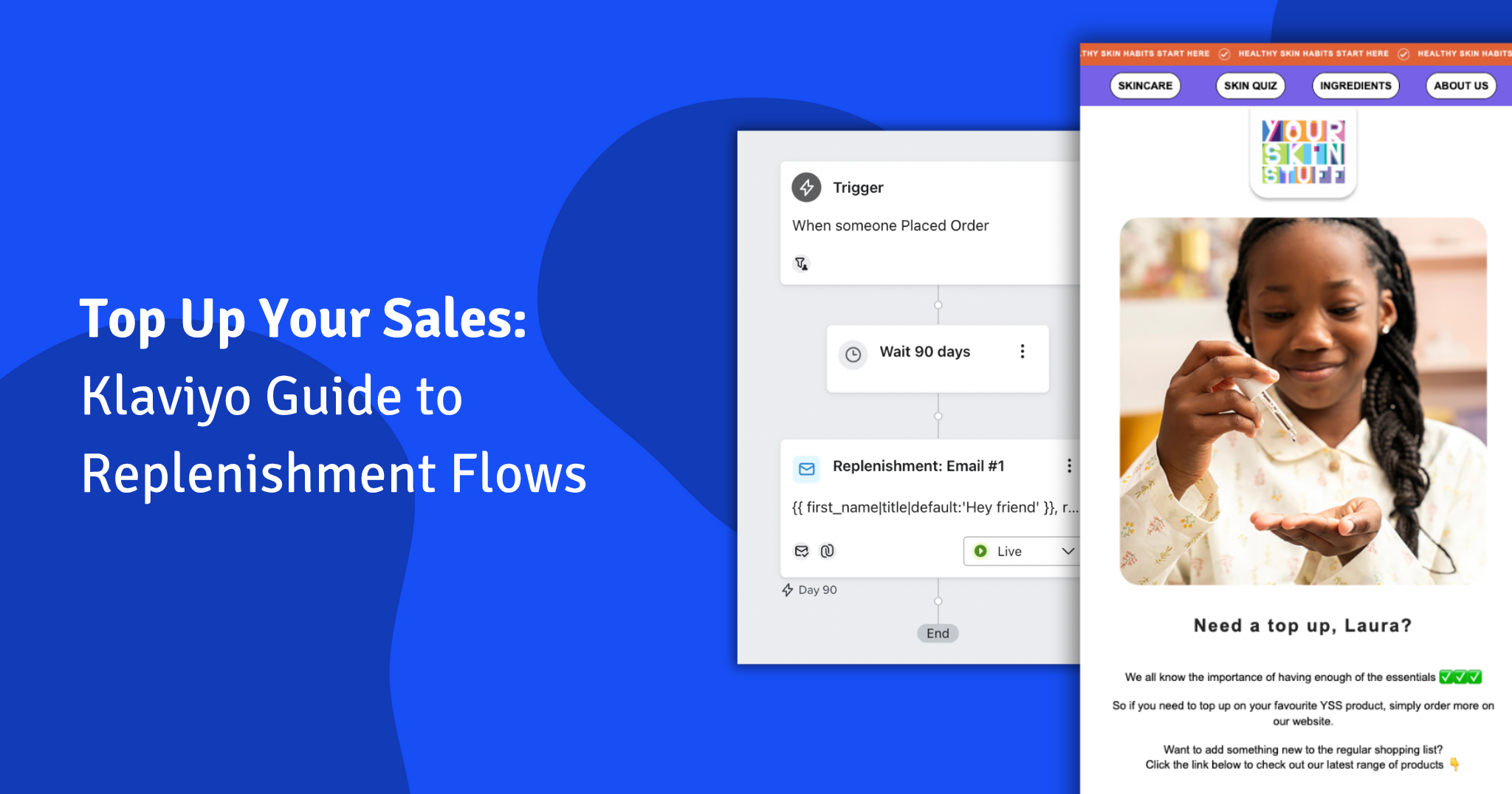The winter is a season divided. In one half, we have feasting, fireworks, and tinsel. The other is characterised by new gym memberships and the distinct absence of fairy lights. Throughout this time, your brand may fit into one camp better than the other but no matter your allegiance, this chilly, dark time should inspire you to change up your marketing tactics. As your customers’ needs and desires shift, meet them at their point of interest, and see how it impacts both your sales and your brand’s image.
Change up your look
Let’s start with the basics. Website design is something which should prioritise your brand’s tone and user experience. However, in tandem to these, you update our imagery and look to fit the seasons, without compromising on the essentials.
This doesn’t have to be—and probably shouldn’t be—a lot of work. You don’t have to build Santa’s Grotto, but a few lights and maybe a tree would be nice. Take inspiration from hotel and spa Galgorm Estate. The festive photography and red banner exude Christmas —you can almost hear the crackle of the fire, and smell the scent of cinnamon candles—but the basics of the brand and the web design are unmoved.

For other ideas, you can update your logo to include festive items (like a little Santa hat, or some snowflakes) or simply incorporate more wintry imagery. If you sell clothing, you may have a seasonal photoshoot to exhibit your new line of coats or winter boots, or perhaps you might sell artisan tea and could create new wintry graphics to promote a special cinnamon and clove range.
Delivery times
Aside from the more seasonal, visual aspects, make sure to update your website with important information—such as the last day for postage or any changes to your delivery times. Christmas is an especially busy time for postal services and this added pressure can delay many products—and could be the unfortunate difference between a Christmas gift under the tree or not.
Make sure to keep this information prominently displayed either on your homepage or at checkout so that your customers have realistic expectations for delivery times.
Seasonal products
When the seasons change, so can your product range. For instance, SoulBia is an online retailer which specialises in artisan and free-from foods all year round. However, as we approach the winter season, the store features new products, such as the Moo-Free Selection Box—something which would not be of interest to customers in mid-July. This encourages customers to return to the store to find novel and new products throughout the season.
Similarly, you might take this opportunity to create novelty and interest in your store by launching a new product. You can look to major brands like Yankee Candle to see how the winter season inspires, in this case in particular, new scents for customers. Chocolate brands may launch a gingerbread or cranberry infused bar, and homeware stores may look to sell brand new snowflake-printed mugs. Depending on the nature of your business, winter can be a great time to take inspiration from the jolly air and create something brand new for customers.

Even if you don’t have any specifically “new” products, you might create a new product bundle in the form of a Christmas hamper. These are particularly popular as they allow customers to purchase an instant-gift, as opposed to curating their own, and can also be a nice way for you to show off lesser-purchased items. For instance, Kilruddery Estate in County Wicklow puts together hampers annually to sell special produce from their farm shop.
Top tip: Putting together hampers can make stock checks a little more complicated. That’s why we recommend setting a stock number for this and deducting this number from the stock of the individual items in the hamper. This should make stock management easier. Alternatively, you may want to advertise your hamper as not having specific items, but products from specific categories (such as confectionery or beauty items), allowing you to be more flexible with set items.
Gift cards
In a similar vein, you might create gift cards if you have not done so already, and promote these as the ideal option for the friends and family members who are difficult to buy for. These are especially useful if your product is not so easily packaged into a hamper or tied up with string. For instance, pottery experiences, massages, painting classes, dinner reservations and hotel stays can all be gifted by means of either a monetary or item voucher.
Shopify gift cards each have a unique code. You simply set the denomination and then the customer will receive an email with the code when they checkout. This can be used online or if you have Shopify POS in store.
If you or your customer would prefer a physical gift card, you can purchase these from Shopify. They come with a choice of templates, uploading your own design, and plastic or paper printing. In 2022, 100 paper gift cards are priced at £1.69 per card, but you can make savings by making a larger order (for example, it costs £0.49 per card if you order 5000).
Top tip: Make sure to promote your gift cards more heavily after your last shipping date has elapsed. These are ideal gifts for those last minute shoppers who require a quality present with a fast turnaround.

Tag products for search terms
As we have mentioned in previous guides, some of your products may not be distinctly wintery or Christmas themed. For instance, you may sell throws and cushions which are available all year round, but will find greater interest amongst your customers in these colder months. It can be helpful, therefore, to tag these products with “Christmas” or “winter” so that they are not missed when a new customer does a brief search of your online store.
As an example, clothing retailer Walk in Wardrobe returns a large range of hats, coats, and festive dresses when the term “winter” is searched. These do not have “winter” in their names, but are rather tagged to be returned when a customer searches for items which fit this theme or description. Without the tag, they may be more easily missed, or looked over entirely.
If you are unsure where to begin with these tags, you can use Shopify admin to check what sort of search terms your customers are already using. This may help you to work out what kind of tags you may use in future, or even what collection you might put together.
Create new content
It is the season of the Great Christmas Advert. Think Aldi’s Kevin the Carrot, Marks and Spencers’ undulating chocolate sauce, and retailer John Lewis for setting the standard in this particular arena. You may not have the budget to animate trampolining dogs or have a popstar do a special cover, but you can certainly look at new ways to capture your customers’ attention with seasonal content.
Of course, this could be a video advertisement to be used on your socials or YouTube channel—or maybe even primetime television, if you’re feeling ambitious—but it could equally be a gift guide article, or a quiz which matches you or a friend to the perfect Christmas-themed product. Penguin Books has created many articles with titles like ‘Books to get you in the mood for Christmas’ and ‘Warming winter drinks to go with your favourite classic reads’—with links to all of these titles included. Similarly, Belfast store MK Toys and Books has created a range of Christmas-themed gift guides for their own store, dividing them up into different age groups and categories, to help and inspire customers.

Collections
Shopify collections allow you to group together products onto one page for easy discovery. For instance, Belfast bookstore Book Paper Scissors has a special “Christmas” collection displayed on their main navigation bar. This then leads customers to a special collection page and key Christmas products, such as coffee table books, Christmas-themed anthologies and seasonal titles. A buyer may then find new products they didn’t even know they were searching for, or even be inspired to buy more from the collection.
Once products are part of a collection, you may then market this appropriately. You don’t have to spend your Facebook advertising or PPC budget on directing customers to your homepage, but rather to your curated collection of timely wintery products. Alternatively, this can be used to create winter sale pages and direct customers not to hot items, but products you are more keen to shift before the end of the year.

Respond to holiday celebrations
The winter period is peppered with celebrations and special days, such as:
- Christmas
- New Year’s Eve
- New Year’s Day
- Blue Monday
- Chinese New Year
- Valentine’s Day
Use these holidays as jumping off points for your marketing ideas.
For instance, during December, customers are likely to be buying more Christmas gifts, and may therefore benefit from special delivery times and prices, or a paid-for wrapping service. You might even simply want to remind them of final shipping dates for various products and your holiday closing dates.
Similarly, New Year’s is a time of reflection and turning over new leaves. If it fits your brand, you might think of incentives to sign up customers to subscriptions or new services, such as your online course or health supplements. Brainstorm the different new year’s resolutions your customers might be making, and help them both find inspiration and stick to their goals.
You might even use this as an opportunity to simply connect with your customers, like emailing them to wish them a happy Christmas or convey your gratitude that they shopped with you this year. Alternatively, you might get in contact with them to ask whether they want any holiday-related marketing emails at all. For some people, Christmas, New Year’s and Valentine’s Day are painful holidays, and they may appreciate the option to opt-out of your reminders and well wishes.
Budget Allocation
With so many different ways to market your ecommerce store during this time, you may feel a tad overwhelmed with how to allocate your budget across the board. Our suggestion would be to divide your strategy between the pre-Christmas gift buying season and a more personal slant afterwards. Your customers are much more likely to be buying for other people during November and the beginning half of December, but will come to your store afterwards for themselves. Therefore, you might think to create advertisements around gift ideas to run close to Christmas, and then swap those out to focus your budget on Boxing Day sales or treating the self during the January blues.

Conclusion
As we have already mentioned, winter is typically divided into pre-Christmas anticipation and post-Christmas resolution. However, your marketing should be responsive to both, and while it doesn’t all have to be Christmas baubles and lights, it should be marked by awareness of your customer’s needs.
If you want further help in putting together your Shopify store, or even how to market it, please contact the team at Glaze Digital. We’re happy to help.


